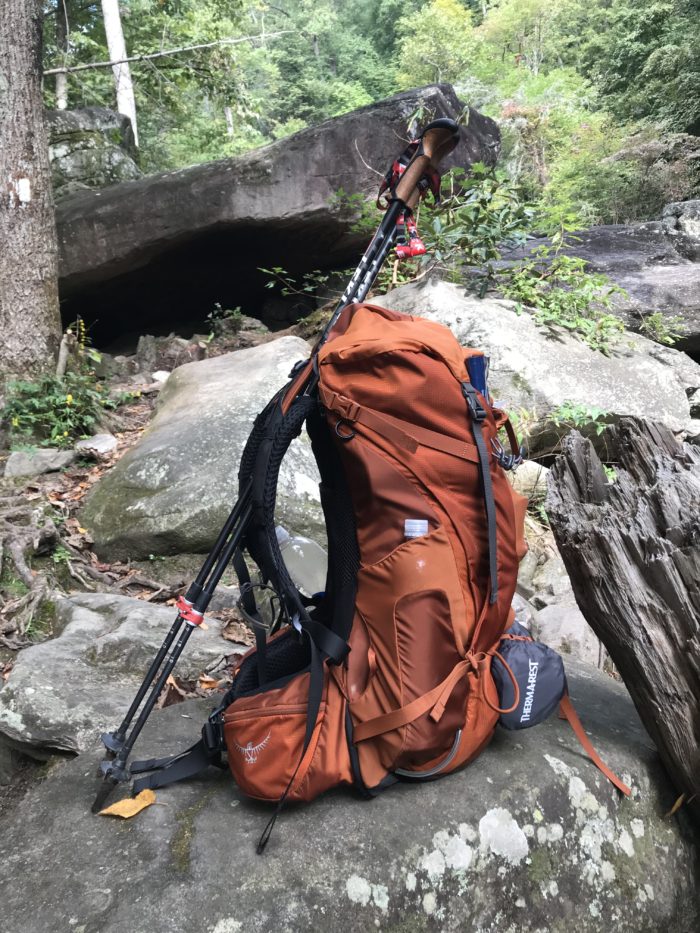The Theory of Gear, Explained for Non-Hikers
So your daughter, grandson, coworker, acquaintance, best friend’s son’s girlfriend’s cousin, or random friend on Facebook who you accidentally added is hiking a long trail. And now you’re trying to understand how he or she will survive hiking 2,000+ miles over the course of five or six months. So here goes an overview of gear theory for non-hikers. I am going to try to keep this concise—hikers are known to discuss gear for hours and hours—but I just want to help you understand how it all works.
Understanding the Undertaking
Five or six months sounds like a long time to hike—and it is—but a hiker isn’t carrying five months worth of supplies. Think of these long hikes as a bunch of three to four day hikes. The vast majority of time a town or resupply point will be every third or fourth day of hiking. At this point, a hiker can replenish their food and any other needed items. The hiker may also stop and spend a day recovering in a hotel, doing laundry, and eating incredible amounts of food at local restaurants.
The next big idea to wrap your head around, even though it will sound simple, is that every item a hiker wears or brings is carried by that hiker. Every item adds extra weight. And extra weight means a hiker burns more calories, walks more slowly, and adds more impact to their joints. So a towel, hatchet, extra shirt, fluffy pillow, or hundreds of other items may seem important at first—but most of them turn out to be unnecessary weight.
The final thing before jumping into gear is to realize the trail is a much safer place than many people initially think. Lots of people immediately fear bears, snakes, mountain lions, other hikers, and all sorts of other animals/people/things. The truth is that all of these things aren’t scary and rarely lead to significant injury. The three Triple Crown trails (Appalachian Trail, Pacific Crest Trail, and Continental Divide Trail) have different risks and concerns (for example, grizzly bears on the CDT), but all three trails are safe. This doesn’t mean hikers need not worry at all. Hikers still need basic first aid supplies, an understanding of their surroundings, and to avoid feeding the wildlife. But guns and large knives are generally overkill (pun intended).
Gear Considerations
Basic premises behind us, it’s time to cover our basic needs—shelter, water, and food.
For shelter, most hikers carry a tent or hammock. Added to this is the hiker’s sleep system, which usually includes a sleeping bag and some type of pad to lie on (foam or inflatable). Additionally, I’ll include clothing here, since it protects from the elements while you’re hiking (or in your shelter). This is usually fairly similar to everyday activities, but focused on lightweight, multiple uses, and a minimal amount of extras. So usually a couple pairs of socks and underwear, shorts, a shirt, a base layer, a light jacket, a heavier jacket, and rainwear. Clothing can differ significantly between seasons and between hikers.
Next, some type of water purification system is usually carried, allowing the user to take from water sources and make the water safe for drinking. The three most common ways to purify the water are filters, chemical additives, and ultraviolet light. Hikers generally carry a couple of regular water bottles or a hydration bladder to transport their water.
Finally, for food, you just gotta carry the damn stuff. And eat it in copious amounts since you’re burning all those calories hiking ten plus miles per day. But seriously, food needs to be shelf stable (doesn’t spoil in your pack) and hopefully high in calories. Lots of hikers also carry some sort of cook system that can boil water to hydrate freeze-dried food and prepare a warm meal.
All of these things go into a backpack, which usually has both shoulder straps like traditional backpacks along with a hip belt, which helps to redistribute the weight of the pack.

My first pack. It has now been replaced and is my backup. Also a perfect pack for when a friend wants to join.
The final important piece of the puzzle is navigation, but for many hikers this doesn’t mean paper maps since the trail is well-trodden and marked with blazes or signs. Still, hikers generally use guidebooks or their phones as sources of information about mileage, water sources, next towns, road crossings, and other important info. Phone apps that don’t need cell service, such as Guthook, have become very popular over the past few years.
Other items end up in hikers’ packs to fulfill specific needs or add luxury to the trip. These include basic first aid items, toilet paper, a headlamp, dry bags, inflatable pillow, battery pack, and other luxury items that help their trip be more enjoyable.

All of my gear. These gear-rectangles are must have pictures for the internet folks. I’m not really sure why, but here ya go.
Ounce Counting
Well, gear seems pretty simple now. So why the heck do hikers talk about it so much? Like all things in this world, people have different preferences. Additionally, throughout the hiking community there has been a huge push to carry as little weight as possible. Less weight should mean less impact on your joints and hopefully a happier hike. But it’s a constant balancing act; a hiker wants less weight but also wants to be prepared for different types of weather and circumstances.
Additionally, hiking technology, especially fabric technology, has changed a lot over the past 20 years. This has allowed gear to get lighter, more water resistant, and more durable. But all of this technology comes at a cost—literally. Another important consideration for gear is the hiker’s budget, as hikers can spend thousands of dollars buying items that weigh ounces less than a cheaper alternative. Often you will hear hikers say “every ounce counts.”

I saw this little shrine on the AT last year during a day hike. Leave change to pray to the hiking gods to lighten your pack (and lighten your pack at the same time by leaving your change).
Packing It All In
Now you’re a gear expert. Just remember that long hikes are broken down into three- to four-day increments, every item you want must be carried, and that the trail is a safe place to be. Then cover all your basic needs—shelter, water, and food. Finally, in true hiker style, obsessively search all over the internet for items that weigh a few ounces less than your current set-up and ask every Facebook group and message board about every piece of gear.
Best of luck in your new journey.
This website contains affiliate links, which means The Trek may receive a percentage of any product or service you purchase using the links in the articles or advertisements. The buyer pays the same price as they would otherwise, and your purchase helps to support The Trek's ongoing goal to serve you quality backpacking advice and information. Thanks for your support!
To learn more, please visit the About This Site page.


